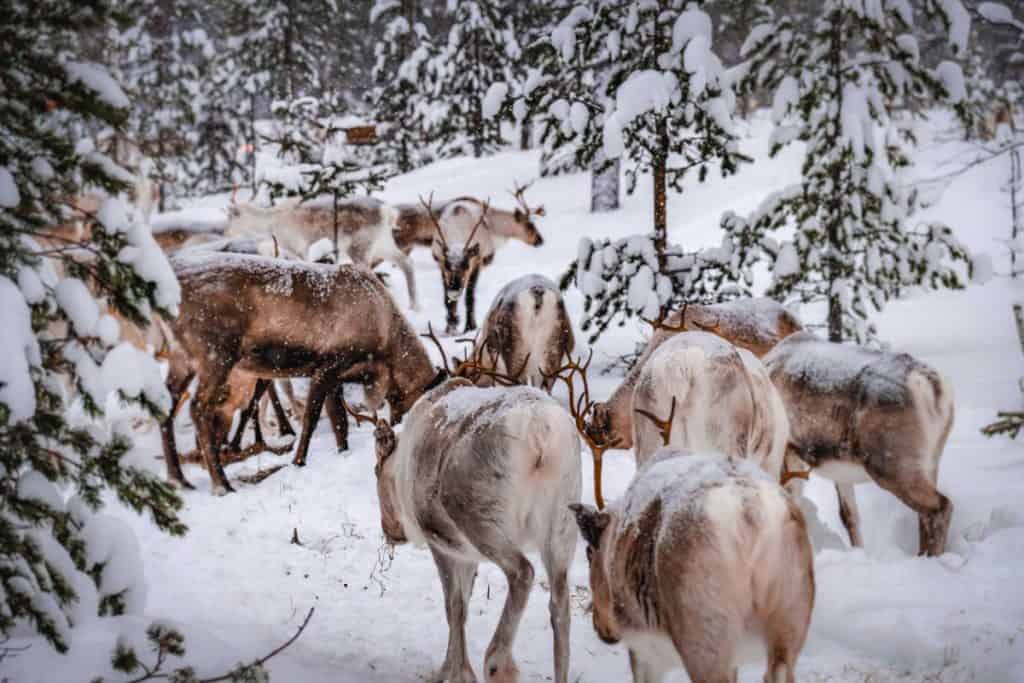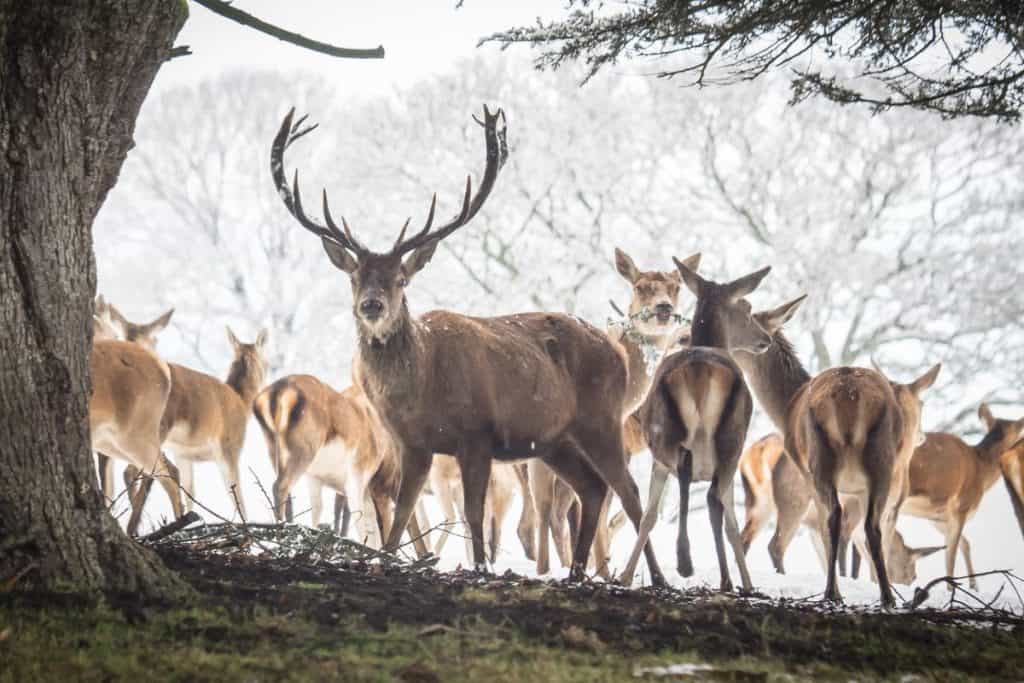Given that deer survive and thrive in some of the coldest climates on earth, there’s no doubt that these hardy creatures have incredible adaptation skills. But when there’s several feet of snow on the ground and temperatures dip below zero degrees Fahrenheit, even the toughest species need a helping hand.
So do deer hibernate to survive?
You might think so, given that when other warm-blooded species, such as bears, are faced with freezing conditions, they huddle up in caves and other sheltered spots to protect themselves from the cold.
They lower their metabolism, heart rate, temperature, and breathing to keep themselves warm and conserve energy. This period of dormancy, or hibernation, can last several months for animals like bears or ground squirrels that hibernate in dens.
But what about deer? Do they have the same ability?

Do Deer Hibernate in Winter?
No, deer do not hibernate. They remain active throughout winter, despite some species facing freezing temperatures and frequent blizzards. While deer exhibit physical and behavioral adaptations to the harsh winter conditions, they are biologically incapable of entering a state of true hibernation.
Deer don’t share the physical properties of other hibernating species, such as bears, including the ability to store massive fat reserves and produce a natural opioid known as Hibernation induction trigger (HIT) that induces hibernation.
In fact, deer have to remain active during the winter for several reasons, as we shall now explain.
Why Don’t Deer Hibernate?
As mentioned, not only do deer lack the physical attributes required to enter a dormant state during winter, but they also require a constant supply of food to sustain themselves.
Fall is the most active season for deer, the mating (rutting) season. When winter comes around, many females will be pregnant and thus need constant nourishment in order to sustain their unborn fawns until spring arrives.
For males, their energy reserves are severely depleted after the rutting season, when they’ll have spent weeks competing for mates and resources with other males.
In other words, due to the high-energy demands of reproduction during the fall months and the low energy reserves of their bodies during winter, it’s simply not possible for a deer to enter a state of true hibernation in order to survive the frigid winter months.

What Adaptations Do Deer Have to Survive Winter?
Deer boast several physiological and behavioral adaptations that allow them to survive harsh climates and remain active throughout the winter.
Physical Adaptions
Deer have all kinds of physical adaptations to help them survive the harsh winter months. Firstly, they grow thicker winter coats that help them maintain body heat in freezing temperatures. This coat comprises thicker, longer, and darker hairs that trap sunlight and keep the body warm.
They also secrete oils from glands that makes their coat waterproof, preventing their fur coats from becoming matted with ice as they roam around searching for food.
Lastly, deer have the extraordinary ability to regulate the internal temperature of specific areas of the body. For instance, it’s typical for deer to “borrow” internal heat from their legs and send it to vital organs such as the heart, lungs, and brain to ensure these systems are kept at optimum temperatures.
Behavioral Adaptations
Regarding behavioral adaptations, deer tend to congregate in sheltered spots known as “yards.” By staying close together in such places during cold snaps and winter storms, they can stay warm and share body heat with one another.
They also make subtle changes to their diets to include more high-calorie foods such as nuts and fruits (even including oranges!) during the winter months, which allow them to better withstand cold temperatures and build fat reserves around their vital organs.
While deer don’t hibernate, they do often reduce movement in winter storms to conserve energy. Some deer species can reduce their metabolism by as much as 50% during particularly harsh winter conditions and hunker down for several days at a time.
Final Thoughts on Deer Hibernation and Winter Survival
Despite what you may have read or heard elsewhere, no deer species can enter a state of true hibernation. Yes, they can hunker down for days on end during the worst winter weather – but they can’t shut down or “sleep” for months at a time as bears can.
This is due to a variety of factors, including the fact they simply don’t have the energy reserves necessary to survive for long periods without eating after a busy fall rutting season.
Female deer tend to be pregnant during the colder months and must frequently eat to ensure they have enough nutrients to support their growing baby. In contrast, males deplete most of their energy reserves during the rutting season and must eat as much as possible to replenish them.
Lastly, deer do not have the physical capability to release the HIT opioid required for a true state of hibernation, as only mammals such as bears and bats possess this physiological adaptation.

